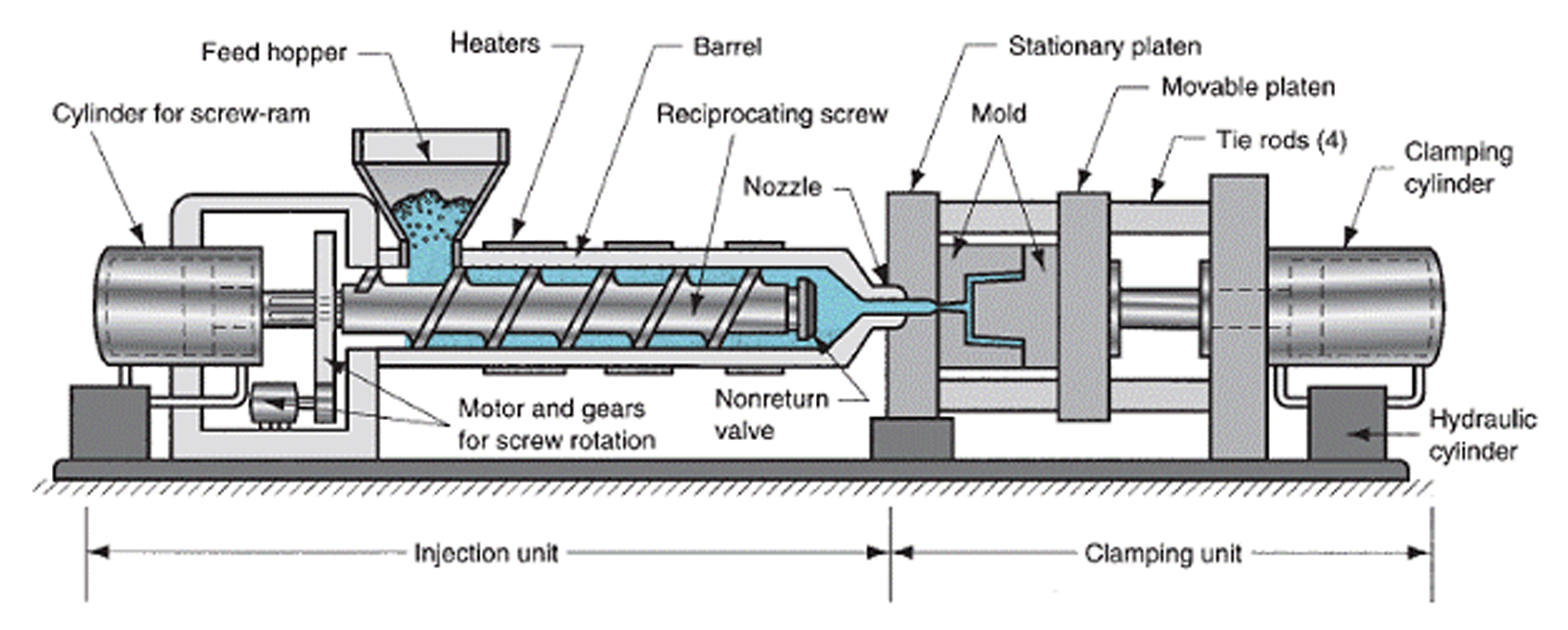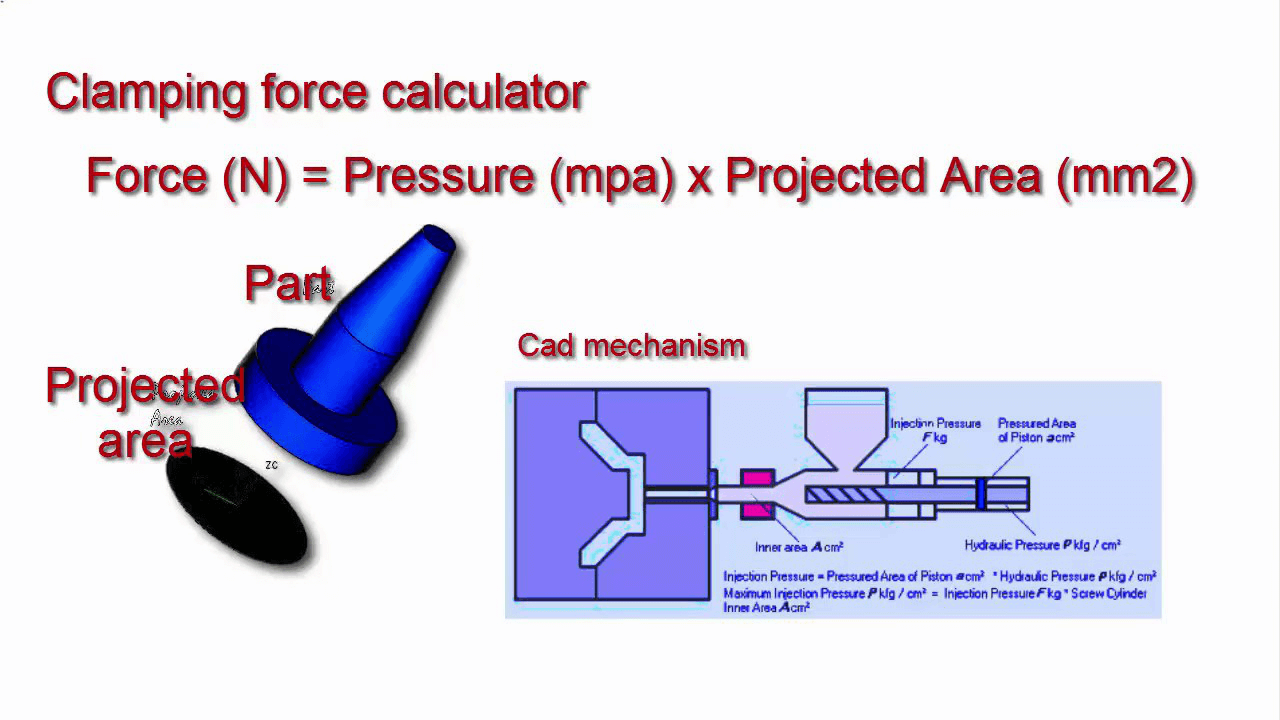Produttore di parti stampate in plastica: guida alle macchine per lo stampaggio
Una guida alla macchina di stampaggio per produttore di parti stampate in plastica
Per garantire le giuste dimensioni dei macchinari, il produttore di pezzi stampati in plastica si rivolge spesso agli stampatori a iniezione di plastica. Questi stampatori a iniezione hanno l'esperienza e la competenza per determinare la dimensione perfetta della macchina.
Dopotutto, il loro obiettivo è trovare la dimensione ottimale della macchina per ottenere i migliori risultati. Forniranno le informazioni di base, consentendo così al progettista e all'ingegnere di ottenere buone stime.
Quando hai un'idea delle dimensioni della macchina, sei in una condizione migliore per prendere decisioni in merito all'approvvigionamento di uno stampatore a iniezione di plastica in grado di soddisfare le tue richieste.
Il produttore esperto offre una varietà di presse. Queste presse consentono loro di facilitare un'ampia gamma di industrie. Sono in grado di progettare e sviluppare parti complesse, uniche e fuori dagli schemi.

La guida alle macchine per lo stampaggio
Per i principianti, è necessario conoscere la classificazione e la classificazione delle presse di stampaggio. Troverai le informazioni sul sito web del produttore. Per un punto di vista generico, ecco come potrebbe apparire:
| Quantità | Dimensioni pressa (presse per stampaggio a iniezione in tonnellata) |
| 4 | 400 |
| 5 | 233 |
| 5 | 154 |
| 5 | 123 |
| 3 | 68 |
Cosa significa la tabella sopra?
The manufacturer uses tonnage in order to rate or classify the plastic injection molding presses. To be more accurate, it is the force or the clamping pressure that defines the rate and classification. You can have presses that run in size over 4000 clamping pressure or less than 5 tons of pressure.
The press ton rating directly influences the size of the machine. Greater the pressure, the bigger the machine. A machine that is rated for 68 tons has the capacity to deliver clamping pressure of 68 tons.
The pressure is important as it ensures that the molds remain close during the injection process. Therefore, the right amount of pressure is imperative. Too little or too much of the pressure can lead to quality issues.
Inoltre una pressione errata provocherà delle scossaline cioè l'eccesso di materiale tende a spostarsi verso il bordo delle parti. La pressione ha anche un impatto sulla viscosità del materiale che il produttore di parti stampate in plastica utilizzerà.
Indice di flusso di fusione
L'MFI (Melt Flow Index) è la misura della facilità con cui scorre un polimero termoplastico fuso. Materiali diversi reagiscono in modo diverso alla pressione. La reazione dipende molto dalla loro rispettiva MFI.
Quando usi l'alta pressione, avresti bisogno di un MFI più alto. Oltre alle presse, è necessario concentrarsi anche sui tipi di macchine disponibili. Ad esempio, puoi avere un ibrido, elettrico o idraulico.
Pressione o forza di serraggio richieste
To determine the size of the press, you need to consider several factors. For instance, you would have to focus on the polymer that you plan to use along with the size of the part. In addition, you even have to pay heed to the safety factor.
So, what is a safety factor? In lame man terms, we can say that it is an additional numerical percentage. You will add this percentage buffer to your calculation in order to avoid errors in the final product.
Plastic molded Parts Manufacturer believes that adding 10%, as the safety factor would yield the desired results. The Melt Flow Index also plays a part in identifying the required pressure to manufacturer components.
Sometimes, you might also add the plate size along with the part and mold size. A general rule of thumb is to use 2.5 times the part’s surface square inches that you are going to produce. Let us take an example, to clarify things.
Take apart with a 42 square inches surface. To find the presses size, you would have to multiple 42 x 2.5 = 105. Now add an additional 10% of the safety factor. You will need a minimum of 11 tons of clamping force to be on the safe side.
When you use 120 tons of press size, it will be able to effortlessly, handle your plastic injection molded products.

Different Types of Molding Machinery
The advancement in the injection molding industry has led to different types of molding methods. However, all these methods do have some common features. For starters, they all need a material they require molding. Usually, the material is in molten form.
Next, is the mold! It is the design, pattern or shape that you want the molten material to take. Lastly, you will need pressure or force. This force is responsible for shaping the material. It tends to expand it into the mold’s geometry.
The major difference of the molding machines lies within these basic features. For instance, a certain process would use specific materials. Likewise, others would have a unique mold shape. They might have used different pressure sources.
Thermoforming Molding Process
Thermoforming is one an effective molding technique that plastic molded parts manufacturers have been using. You would need a thermoplastic plastic or a thermoset. To press the plastic into the mold, you would use a vacuum.
There are specific molding machines that perform thermoforming. These machines tend to move a plastic sheet over a mold. The sheet hermetically seals to the pattern. In addition, it is imperative to heat the plastic until it is extremely soft.
Now, it is time to put the plastic into the mold. Here, you will need a vacuum. The vacuum would suck the plastic into the mold. For final touches, you can use cutting devices. These devices tend to trim excess plastic present around mold edges.
After this, you remove the plastic from the mold. The molded plastic or part is sent down the line, and a new sheet is brought in for the next part.
Vacuum Forming
When you are looking for a different gauge capability, we would recommend vacuum forming. This is an effective type of thermoforming for thermoplastic to deliver different kinds of applications. Manufacturers generally require vacuum forming when they use film or thin plastic sheets.
To put the plastic into the mold, you will stretch the film on top of the mold. Then you will use the vacuum to suck the film around it.
Identifying the Right Molder
Identifying the press size is the most important aspect of finding the right molder. Knowledge about the press size would help you limit down the number of companies. Just make sure that a company that you choose is capable of meeting your expectations.
A good rule is to look for molders that offer a wide range of presses sizes. For instance, Kaitomould is the perfect company. Their wider range of selection allows them to accommodate your needs. They are a company that can not only build but also design and runs the mold.
It is important to select a company that tends to maximize the manufacturing process. The company should have the ability to offer tolling allowances. In addition, it should help consumers minimize the overall cost of their entire project.
A plastic injection molder is going to make the final decision in terms of choosing the right machine for your project. Larger presses tend to accommodate larger multi-cavity molds and big molds. However, larger molds are expensive.
Therefore, it is important to choose the right size as this would help balance the upfront cost along with the manufacturing expenditures.
Porta via
For Produttore di parti stampate in plastica, having the right size of the molding machine is imperative. After all, only the right equipment would promise accurate results. It would ensure that the manufacturer can deliver quality products on time.
Kaito Mould uses state of the art equipment along with a wide range of presses to ensure high quality, complex and different parts. They have been in business long enough to understand all that is required to design and develop flawless products.
If you have any queries, reach out to their customer services for answers:
Se possiamo aiutarti con il tuo progetto, chiamaci allo 0086-769-82821468 o invia un'e .



